Mexico City is an old city. Not in terms of the number of people, because they are still quite young. In 2020, 24% of CDMX residents aged between 24 and 35 years. Also not too old considering his age alone. According to The Economist, urban sprawl increased 128% between 1990 and 2014. After 1970, the number of core delegates of four swelled to 16, meaning most of Mexico City was newly acquired.
However, the heart of Mexico’s dynamic capital is an ancient city full of stories and legends, traditions and lore. And if this city wasn’t interesting enough, here’s something else to add to the list: it is home to the oldest street in America.
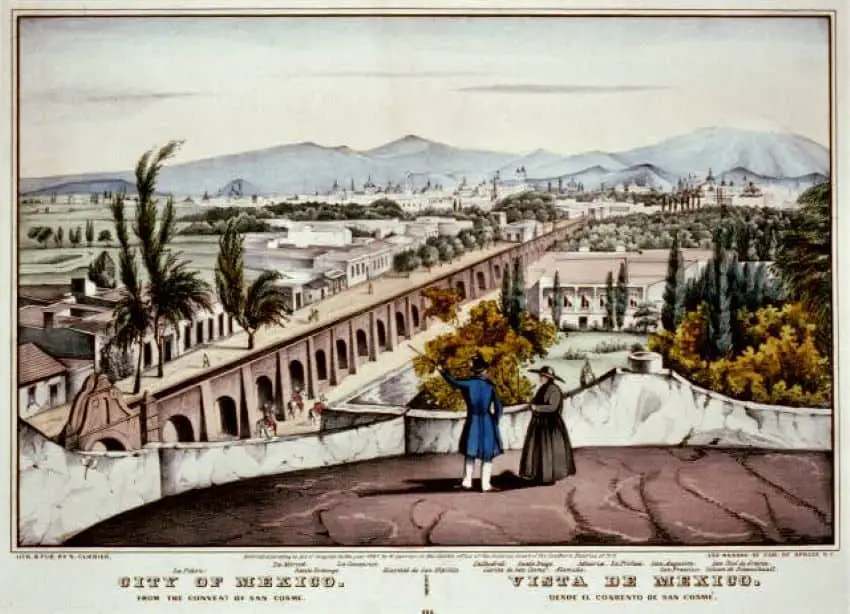
A statistic that I find quite surprising, since the ranking is comparable to the Dominican Republic, Cuba, Uruguay and Brazil. But it’s true: no street documentation still in use in America can rival that of Mexico City.
Of all the oldest streets in America, Calle Tacuba has outlived them all.
If you’ve ever been to the beautiful and energetic Historic Center, you’ve probably wandered along its winding sidewalks, dodging perfume sellers, and been charmed by the charm of the restaurant’s pretty hostesses. You may even have reached the far end of Miguel Hidalgo, where the street is known by a different name, and its borders border the flower-filled cemeteries of Mexico City’s oldest international community. No matter which of the five sections you explore, you are sure to encounter various forms of architecture, people, food, and traffic, both cars and pedestrians.
Let’s start at the beginning, as they say. In 1325, construction of the glittering Mexica kingdom, a floating paradise in the middle of Lake Texcoco, began. The city grew rapidly, spreading out from the islands and requiring connections with dry land. Workers broke ground on several causeways and embankments that not only connect the capital to the mainland – they separate salt water from fresh water, supporting an extensive local farming system known as chinampas.
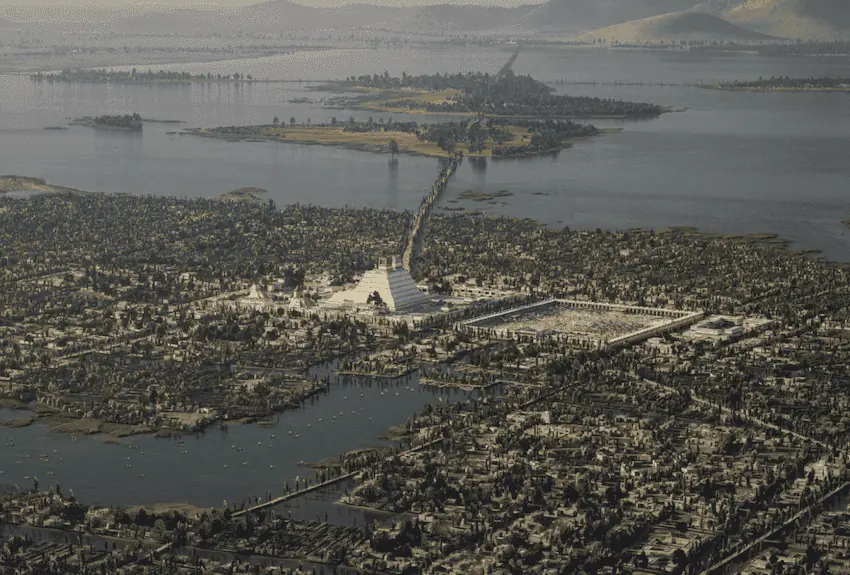
Between 1377 and 1389, a major causeway was built, connecting Tenochtitlan with the neighboring city-state of Tlacopan, its partner in the Triple Alliance. The Mexica people would be proud to know that the street they built was able to survive invasions, earthquakes, floods and revolutions and become a gathering place for art and architecture lovers, street vendors and pan dulce addicts, like me.
Depending on your location, the Tlacopan causeway is now referred to as one of the following:
- Tacuba Street (Historical Center)
- Avenida Hidalgo (Historical Center)
- Alvarado Bridge, now Mexico-Tenochtitlán (Buenavista)
- Ribera de San Cosme (Santa Maria la Ribera)
- Mexico-Tacuba (Tacuba)
The 8-kilometre (approximately 5 miles) road stretches west from the bustling Zócalo to Tacuba’s Panteón Británica. In theory, you could walk as far as you can, immersing yourself in a small part of the limitless lifestyle to be found in Mexico’s eclectic capital. What’s more, you can take a walk through history, making sure to stop at must-see landmarks along the way.
Mining Palace
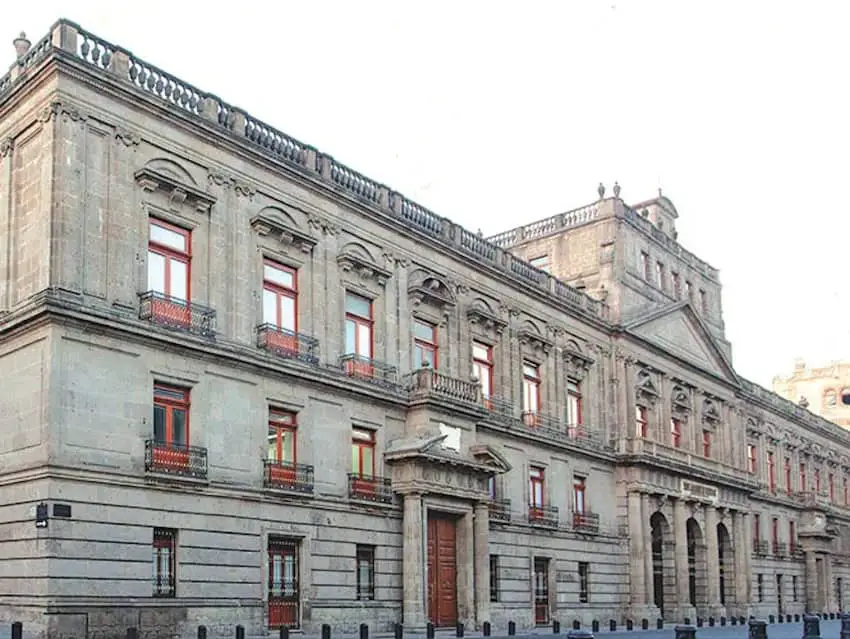
Tacuba Street 5, Historical Center
Originally built under architect Manuel Tolsá between 1797 and 1813 to house the Royal Mining School, Mining Palace is a cultural center and museum dedicated to the architect himself. Many visitors come just to admire its stunning Neoclassical architecture, and guided tours take place on weekends at 11:00 am and 1:00 pm.
National Art Museum (MUNAL)
Tacuba Street 8, Historical Center
belongs to Mexico National Art Museum displays a large collection of Mexican art from the 16th century to the present. The building itself is a neoclassical masterpiece, often serving as a cultural center for exhibitions and educational programs.
El Cardenal Restaurant
Calle Marconi 2, Historical Center
That popular Mexican restaurant housed in the former offices of the capital’s electricity company, it is always a favorite with locals and tourists. And with its location close to MUNAL, this place is the perfect combination of museum and lunch.
Perfume Museum (MUPE)
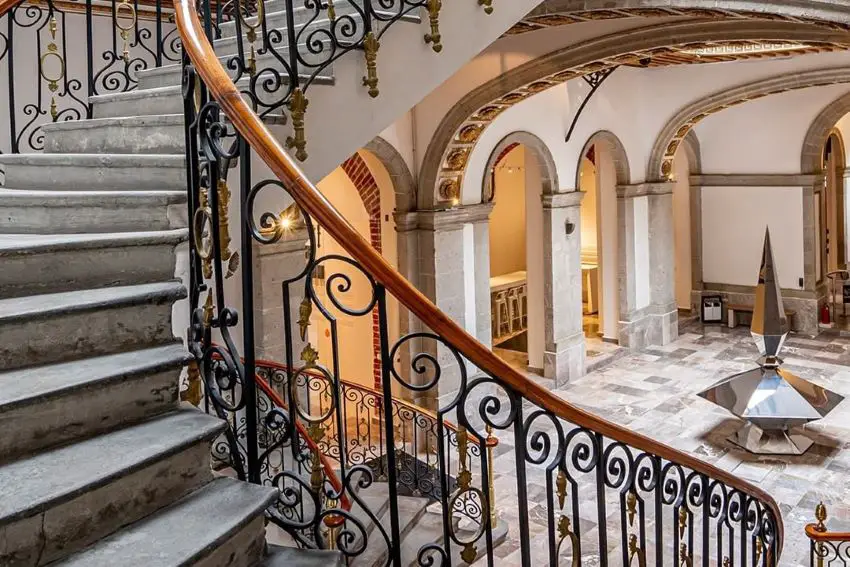
14 Tacuba Street, Historical Center
This unique museum is dedicated to all things fragrance. From the history of perfume to common ingredients to the look of vintage bottles, it’s the things that really stand out Perfume Museum is its extraordinary interior architecture.
Tacuba Coffee
Tacuba Street28, Historical Center
Is the food amazing? Uh. Is the service the best? Ehhh. Is it important? Obviously not. Don’t think twice about queuing for a table at this historic cafe, which has been serving traditional Mexican cuisine since 1912. Its charming atmosphere makes it a favorite for locals and visitors looking for authentic flavors.
Mexican Post Office Palace
Tacuba Street 1, Historical Center
Another magnificent gem located beautifully on Calle Tacuba, Mexico City the most famous post office blessed with a spectacular interior decorated with murals and intricate carvings.
Palace of Fine Arts
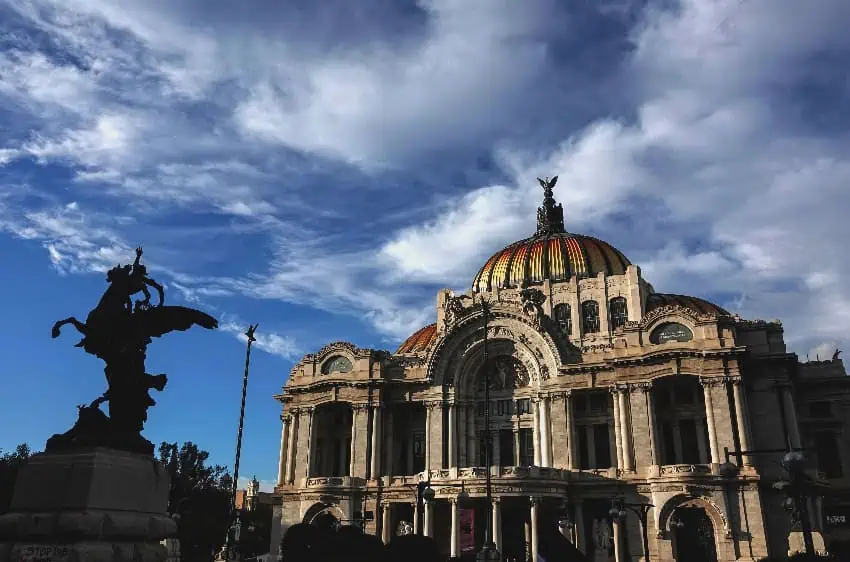
Avenida Juárez, Historical Center
After defying the disastrous effects of the soft ground and the rowdy Mexican Revolution, CDMX became an icon Fine Arts Museum still standing tall and proud on the edge of Alameda Central. In addition to original works by Diego Rivera and Rufino Tamayo, there is a beautiful theater that regularly hosts opera and ballet concerts.
La Vasconia Bakery
73 Tacuba Street, Historical Center
That the oldest bakery in town is located here on Calle Tacuba and has been serving traditional pan dulce and other sweet treats since 1870.
San Hipolito Church
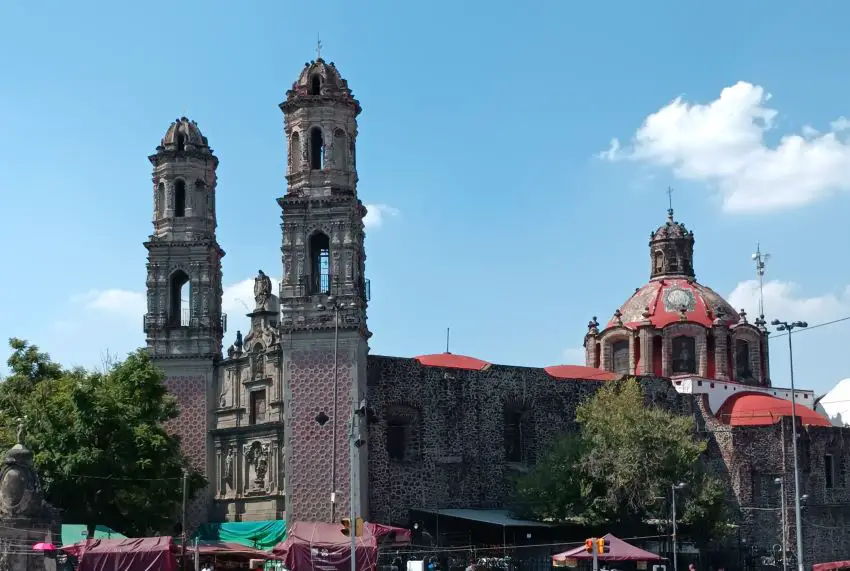
Zarco 12, Guerrero
It’s much more than that a magnificent church. Formerly known as Puente de Alvarado, this area was once a defensive moat that protected Tenochtitlan. It was here that Spanish soldiers, fleeing Tenochtitlan in 1520 under the command of Hernán Cortés, drowned under the weight of the gold they were trying to save. The temple that stands today was started in 1599 and completed in 1740.
San Carlos Museum
Avenida México-Tenochtitlán 50, Tabacalera
First, anything museum located in a former palace worth to visit. Additionally, the impressive collection of European art features famous artists such as Francisco de Goya and Peter Paul Rubens.
Temple of Saints Cosme and Damian
Serapio Rendon 5, San Rafael
Once upon a time, there was a small pueblo here called San Cosme. It is believed to have originated in 1524 when Hernán Cortés allocated land for orchards and agriculture. Over the years, a chapel and hospital were built, and in 1672 so too striking, gold-laden temples.
San Cosme Market
18 Gabino Barreda Street, San Rafael
Full of everything positive, from mango to mazapanthose looking for a truly local shopping experience can’t go past this market without ducking for one or 60 minutes. Shopping with kids? Drop them off at the on-site day care center and just buy them.
FARO Cosmos

Mexico-Tacuba Causeway, Tlaxpana
While I invite you to stick around for the show, the real purpose of stopping in FARO Cosmos is the space where it is located. This historic theater, formerly known as Cine Cosmos, was especially famous during the Golden Age of Mexican cinema. Inside there is a monument dedicated to the student movement of 1971, which served as a refuge for students and protesters during the repression by the police and military.
Hero Military School
Avenida México-Tacuba Campo Militar 1-B, Popotla
This vast and dramatic campus no longer functions as a military academy, but rather as a military-run museum. Today, visitors can peruse weapons, riding gear and portraits of famous generals since the Mexican Revolution.
Merced de las Huertas Chapel
Calzada México-Tacuba 305, Miguel Hidalgo
The tempered blue-and-white facade doesn’t fully convey the warmth inside 17th century church. Historically, it is thought to be home to a wooden statue of the Virgin of Tacuba (dating from 1762) that was stolen in 2005. Damaged during the theft, the statue was recovered and guarded by the court until its careful restoration in 2012. She now sits comfortably in original residence.
Victory Night Tree
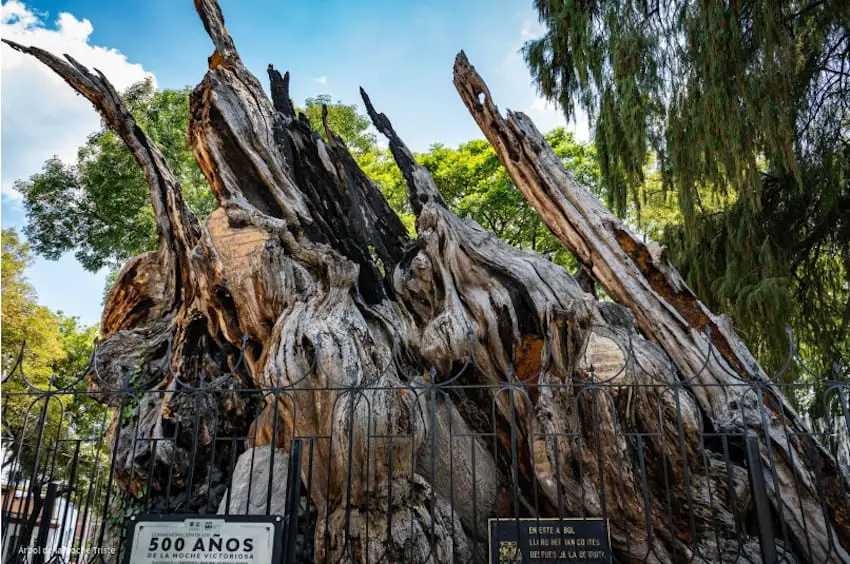
Calz México-Tacuba 453, Popotla
On June 30, 1520, Spanish conquistadors and Native allies led by Hernán Cortés fled Tenochtitlán via the Tlacopan causeway, and suffered heavy losses. The defeat had a deep emotional impact on the conqueror. So much so that, according to legend, he sat on a a very large and crooked pine tree on the causeway, put his head in his hands and cried.
For generations, the event was known as La Noche Triste (Night of Sorrows), after the appropriate tree, but in 2020 the government changed the name of the event to the Night of Victory. Cortés’ supposedly weeping tree still stands, and although it’s seen better days, there’s an undeniable energy that radiates.
Come on, quickly
It’s a little hidden gem in this neighborhood is a surprising mix of Porfiriato-era mansions and colorful facades, breezy gardens and functional architecture. If you’re a fan of authentic, handmade tortillas, and I think you are, don’t forget to stop by La Reyna’s Tortilla a mano on Calle Mediterráneo.
International cemetery
Lago Saima 78, Huichapan
Technically the pinnacle of America’s longest street, the English Cemetery opened in 1824 and operated under British rule until it ran out of space—that’s no joke. You can still visit the British Chapel which is now part of the Juan Ruíz de Alarcón cultural center. Within walking distance are the American, German and Spanish cemeteries, where you can find the grave of the beloved Mexican actor Mario Moreno, better known as Cantinflas.
Bethany Platanella is a travel planner and lifestyle writer living in Mexico City. She lives for the dopamine hit that comes directly after booking a plane ticket, exploring the local market, practicing yoga, and munching on a fresh tortilla. Register to receive it Sunday Love Letter to your inbox, peruse him blogsor follow him Instagram.





